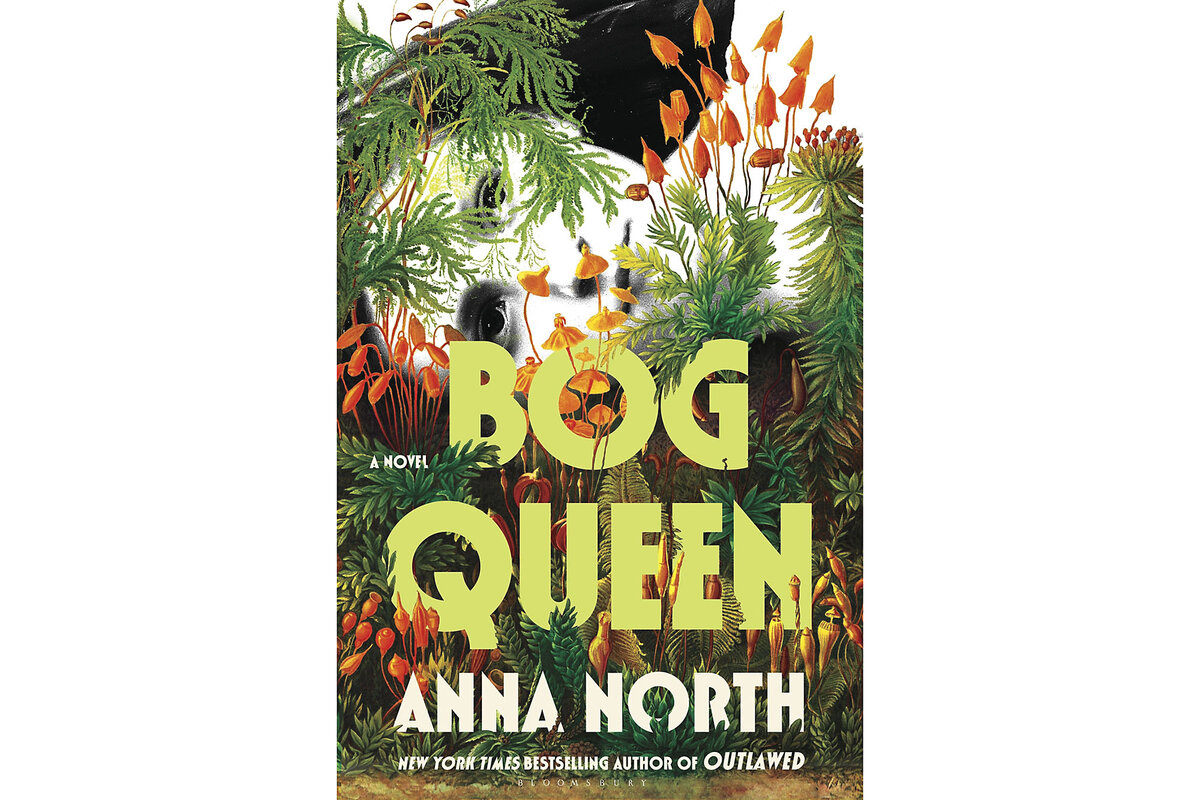A mystery wrapped in moss and buried in a bog
Loading...
You never know who’s going to play a momentous role in your life. In Anna North’s “Bog Queen,” two smart, ambitious women born two millennia apart – a Celtic druid and a forensic scientist – bring unexpected acclaim to one another.
In recent years, brilliant female scientists have become the darlings of literature, an expedient way to write about accomplished, can-do women who deserve to be taken seriously. To cite just three examples of such characters: Elizabeth Zott, a research chemist fighting for recognition in a male-dominated world in Bonnie Garmus’ “Lessons in Chemistry”; Leigh Hasenbosch, a Dutch microbiologist who is sent into space on a secret mission in Martin MacInnes’ “In Ascension”; and Ada Twist, an insatiably curious girl whose budding STEM skills are celebrated in Andrea Beaty’s popular children’s book, “Ada Twist, Scientist,” which was inspired by the groundbreaking achievements of Ada Lovelace and Marie Curie.
And now, Anna North‚Äôs fourth novel features Agnes Linstrom, a gifted but socially awkward American forensic anthropologist finishing a postdoctoral fellowship at England‚Äôs Manchester University. Agnes, who specializes in bones and teeth, ‚Äúreads‚Äù bodies, delving beneath the surface the way some of us read books. ¬Ý
Why We Wrote This
Mystery novels often explore how the past touches the present. The juxtaposition of a modern-day protagonist and her counterpart from ancient times can turn up fascinating contrasts and parallels.
When peat cutters discover a remarkably well-preserved female body in a bog in Ludlow, England, in 2018, the coroner brings in Agnes to verify its identity and determine the cause of death. Could this be Isabela Navarro, whose husband has confessed to burying her in the moss back in 1961, after she fell backward down stone stairs during a domestic quarrel? Two local scientists, both women ‚Äì a bioarchaeologist and a pathologist ‚Äì join Agnes and provide valuable auxiliary data.¬Ý
The X-rays show evidence inconsistent with the husband‚Äôs account of his wife‚Äôs fatal plunge. A comparison of the wife‚Äôs dental records with a chart of the bog body‚Äôs teeth (the specifics of which I‚Äôll leave for readers to discover), confirms Agnes‚Äô conclusion that the body is not that of Isabela Navarro. ¬Ý
Her pronouncement is upsetting to¬ÝIsabela‚Äôs niece, who has been summoned to retrieve what was believed to be her aunt‚Äôs recently unearthed body and take it back to Spain. ‚ÄúIf it is not my aunt, then who is it?‚Äù she asks. This is one of several questions that drive ‚ÄúBog Queen.‚Äù¬Ý
‚ÄúBog Queen‚Äù braids two timelines ‚Äì one in 2018, involving Agnes ‚Äì the other in the Iron Age, around 50 B.C.E., just before the dawn of the Roman era, involving an ambitious young druid. ¬Ý
Before Agnes receives the¬Ýcarbon-dating report on the body, North‚Äôs narrative jumps back 2,000 years to the druid‚Äôs story, in which she recounts efforts to protect and improve the well-being of her clan. (Druids served as high-ranking religious leaders and legal and medical authorities in Celtic cultures.)¬Ý
Central to these efforts is the perilous journey she takes to visit the king of Camulodunon, near modern-day Colchester. The inexperienced druid is courted by the king ‚Äì who seeks to forge a strategic alliance with her people. He wows her with marvels introduced by the Romans ‚Äì including writing instruments and maps, hitherto unknown to the Celts. ¬Ý
Meanwhile Agnes, who is determined to uncover the secrets of the body from the bog and seal her academic future in the process, encounters perils of her own.¬Ý
Never socially adept even in the best of circumstances, she struggles to negotiate a compromise among groups that are all vying for control over the bog. These include environmentalists determined to stop all excavations to restore and protect the carbon-rich moss (which is a powerful antidote to climate change); industrialists and developers eager to sell the peat and build luxury apartments; archaeologists hoping to gain insights into ancient cultures; and Isabela‚Äôs niece, who is determined to recover her aunt‚Äôs body. ¬Ý
The result is a strangely beguiling tale that celebrates perseverance, scientific inquiry, environmentalism, progress, and cooperation. North keeps readers turning pages to find out whether Agnes will prevail and solve the mystery of the bog woman. Unfortunately, the chapters in which the author attempts to animate the bold young druid‚Äôs life are less compelling and convincing, often bordering on hokey. ¬Ý
In another risky but more successful move, North gives both the first and last word not to her female scientists, but to the book‚Äôs true hero: the moss.¬Ý
“A colony of moss does not speak or think in language,” she writes. “But if such a colony could tell the story of its life, it might say this: Once, we flourished.” Later, channeling the moss again, North adds: “Though we may pass through thirsty seasons, some extending across many human lifetimes, eventually, we triumph.”
How? The answer might hold a lesson for humans: “We create the conditions of our thriving.”





